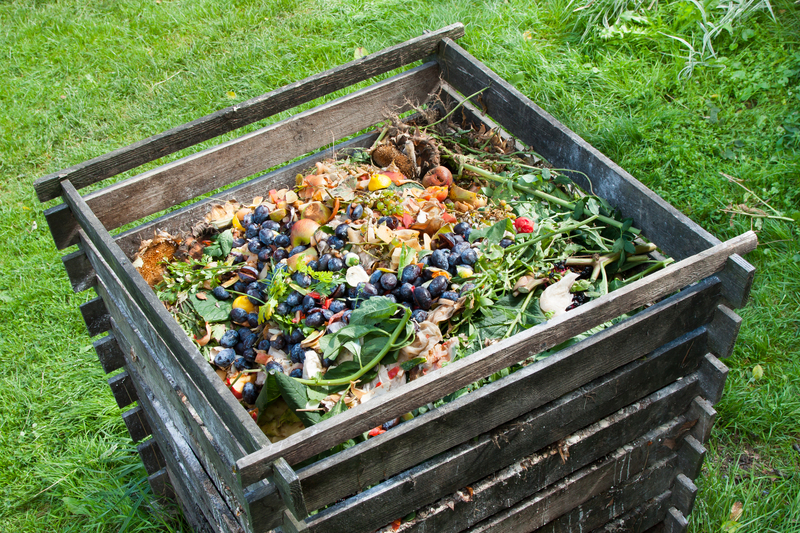Understanding the Importance of Proper PPE Waste Management
The global response to health emergencies, routine healthcare, and industrial hazards has significantly increased the use of Personal Protective Equipment (PPE). PPE waste management has emerged as a critical environmental and public health concern. Understanding the challenges and best practices surrounding the correct disposal and treatment of PPE waste is essential in promoting sustainability, public safety, and environmental preservation.
What is PPE Waste?
Personal Protective Equipment encompasses a range of items designed to protect individuals from exposure to infectious agents, chemicals, or other hazardous materials. Common PPE includes:
- Masks (surgical, N95, and cloth)
- Gloves (latex, nitrile, and vinyl)
- Gowns and aprons
- Face shields and goggles
- Shoe covers and caps
During and after use, PPE becomes contaminated and must be discarded safely. Improper PPE waste handling can result in widespread environmental damage and health risks.

Why is Proper PPE Waste Management Essential?
The importance of PPE waste management transcends aesthetic concerns. It touches on vital aspects of environmental protection, public health, and the sustainability of waste systems. Below, we explore the core reasons why correct disposal and treatment of PPE waste are vital.
1. Prevention of Disease Transmission
Improperly handled PPE used in hospitals, laboratories, and public areas may become a vector for infectious diseases. Discarded gloves or masks can harbor pathogens, putting waste handlers and the public at risk. Proper PPE disposal reduces the likelihood of the spread of bacteria and viruses, particularly in pandemics like COVID-19.
2. Environmental Protection
Many PPE items are single-use and made from non-biodegradable plastics such as polypropylene. If not managed properly, PPE waste ends up in landfills, rivers, and oceans, causing pollution and endangering wildlife. Microplastics from degraded PPE can enter food chains, affecting ecosystems on a global scale.
3. Compliance with Regulations
Governments and international bodies have established guidelines and regulations regarding PPE waste management. Proper segregation, treatment, and disposal are legal requirements in many industries. Non-compliance may result in fines, shutdowns, or criminal charges.
4. Promoting Circular Economy
A sustainable approach to PPE disposal can facilitate recycling and recovery of materials, supporting the circular economy. Innovative waste management systems reduce the demand for new raw materials and lessen ecological footprints.
Types of PPE Waste and Their Hazards
Understanding the specific challenges of PPE waste disposal requires insight into different categories of PPE waste.
1. Infectious PPE Waste
- Primarily from healthcare and research settings.
- Often contains blood, body fluids, or microbial contaminants.
- Requires specialized containment and treatment, such as incineration or autoclaving.
2. Industrial PPE Waste
- May be contaminated with chemicals, oils, or heavy metals.
- Some industrial PPE is classified as hazardous waste and must follow strict disposal protocols.
3. Community PPE Waste
- Mostly from widespread use of masks and gloves by the general public.
- Improperly discarded PPE in streets and parks clogs drainage systems and impacts municipal waste management.
PPE Waste Management: Best Practices
Comprehensive and efficient PPE waste management solutions are critical in minimizing risks and maximizing the sustainability of protective equipment use. Below are best practices for handling, treating, and disposing of PPE waste.
1. Segregation at Source
- PPE waste should be separated immediately after use.
- Color-coded bins (often yellow or red) are used for infectious waste.
- Clear labeling of waste containers is essential for safe collection and transport.
2. Safe Handling and Collection
- Waste handlers must use proper PPE themselves.
- Training is necessary to reduce exposure risks and ensure safety protocols are followed.
- Use of leak-proof, puncture-resistant containers helps prevent accidental spillage or injury.
3. Treatment Technologies
- Incineration: Effective for infectious PPE waste, converting hazardous materials into inert ash. However, concerns about air pollution and toxic emissions must be considered.
- Autoclaving: Uses high-pressure steam to sterilize and render waste non-infectious, ideal for certain healthcare settings.
- Microwave Treatment: An emerging technology that disinfects waste before further handling or disposal.
- Chemical Disinfection: For select PPE types, chemicals can be used to neutralize pathogens before disposal.
4. Environmentally Friendly Alternatives
- Encourage recycling where feasible. Some masks can be processed to reclaim plastics.
- Promote the use of biodegradable or reusable PPE when appropriate, especially in non-clinical settings.
- Public education campaigns about proper PPE disposal can reduce litter and contamination in communities.
Challenges Facing PPE Waste Management
While the necessity of proper PPE waste management is clear, there are several challenges to overcome:
- Volume Surge: Health crises such as the COVID-19 pandemic caused an explosive increase in PPE use, overwhelming existing waste management systems.
- Resource Constraints: Developing countries struggle with limited waste handling infrastructure and lack of funding.
- Awareness Gaps: The public is often unaware of safe disposal methods, leading to widespread littering.
- Technological Barriers: Advanced treatment options may not be available everywhere, leading to unsafe disposal practices.
Global Regulatory Frameworks and Guidelines
International organizations including the World Health Organization (WHO) and UNEP have issued comprehensive guidelines on PPE waste management. Key recommendations include:
- Immediate segregation of healthcare waste at the point of generation.
- Use of clearly marked and color-coded containers for different waste streams.
- Treatment of infectious waste using proven methods such as incineration or autoclaving.
- Provision of personal protective training and resources for waste handling personnel.
- Strict documentation and reporting of waste volumes and disposal methods.
The Role of Individuals and Communities
Proper PPE waste disposal is not only the responsibility of healthcare facilities and industries. Individuals in communities play a critical role in reducing the environmental impact of PPE waste. Here's how:
- Follow Local Guidelines: Many municipalities provide special disposal instructions for used masks and gloves; following these prevents contamination.
- Reduce and Reuse: Opt for reusable masks when safe and preferred, reducing single-use waste.
- Public Awareness: Sharing knowledge about PPE waste dangers helps influence responsible behavior community-wide.
Innovation in PPE Waste Recycling
The rapid increase in PPE consumption has spurred research into recycling and upcycling PPE materials. Some promising initiatives include:
- Plastic Recycling: Specialized facilities are exploring safe methods to recycle polypropylene masks and gowns into useful products.
- Energy Recovery: Certain waste-to-energy plants can use PPE waste as fuel, converting biological and chemical contamination into heat or electricity.
- Material Recovery: Innovative startups are developing new technologies to extract usable raw materials from PPE waste streams.
While these solutions are early-stage, they represent vital steps toward sustainable PPE waste management.

The Future of PPE Waste Management
The experience of recent global health challenges highlights the urgent need for robust PPE waste management strategies. Moving forward, the integration of greener materials, greater public awareness, and technological advances will drive improvements in how PPE waste is managed worldwide.
- Emphasis on designing PPE with recyclability or compostability in mind.
- Enhanced stakeholder collaboration between manufacturers, governments, waste handlers, and the public.
- Investment in research to develop advanced waste treatment methods that balance effectiveness with environmental concerns.
Conclusion: Embracing Responsible PPE Waste Management
Proper PPE waste management is a cornerstone of public health, environmental stewardship, and regulatory compliance in the modern era. The correct handling, treatment, and disposal of personal protective equipment help prevent disease transmission, protect nature, and support the well-being of current and future generations.
As the use of PPE becomes more widespread across all levels of society, it is crucial to foster awareness and adoption of best practices in managing PPE waste. By embracing responsible waste management, we take a vital step in safeguarding both our health and our planet.
Together, by understanding the importance of proper PPE waste management, we can pave the way toward a cleaner, safer, and more sustainable world.
